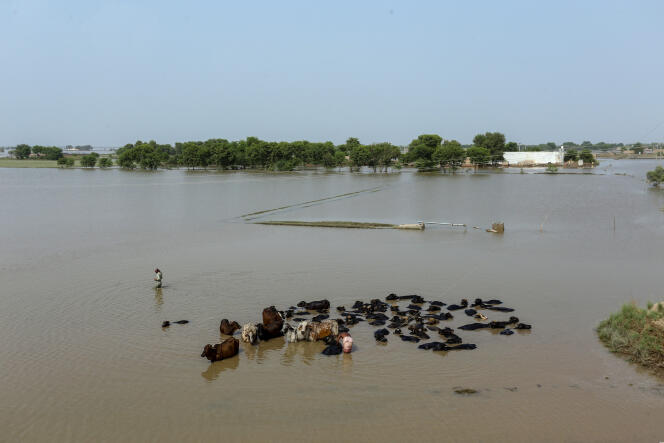


Asia was the region of the world that was most affected by weather, climate and water-related disasters in 2023, according to a report published by the World Meteorological Organization (WMO) on April 23, the United Nations agency responsible for weather, climate and water issues. The region, which accounts for just under a third of the Earth's landmass and is home to 60% of the world's population, including the giants that are China and India, was heating up faster than the global average: The warming trend has almost doubled since the period from 1961 to 1990.
The year 2023 was one of historic heat records: sea surface temperatures in the northwestern Pacific Ocean were the highest on record, reports the WMO. "The report's conclusions are sobering," WMO Secretary-General Celeste Saulo said in a statement, citing "a barrage of extreme conditions, from droughts and heatwaves to floods and storms." Climate change has "exacerbated the frequency and severity of such events, profoundly impacting societies, economies, and, most importantly, human lives and the environment that we live in," she continued.
The report notes that 79 disasters associated with hydrometeorological hazard events were reported in Asia in 2023, according to the Emergency Events Database. Over 80% of these were related to floods and storms, which led to over 2,000 deaths and 9 million people directly affected.
WMO experts were also alarmed by the state of Asian glaciers, as the highest Himalayan mountains constitute the world's largest ice reserve outside of the polar regions: 20 of the 22 glaciers observed in the region, namely the glaciers of the Tibetan plateau and the Tian Shan range, which runs from Xinjiang in China to the Pamir mountains in Central Asia, have continued to lose mass. Among them, Urumqi Glacier No. 1, in the eastern part of Tian Shan, recorded its second-highest "negative mass balance" (a measure of glacier shrinkage) since measurements began in 1959.
